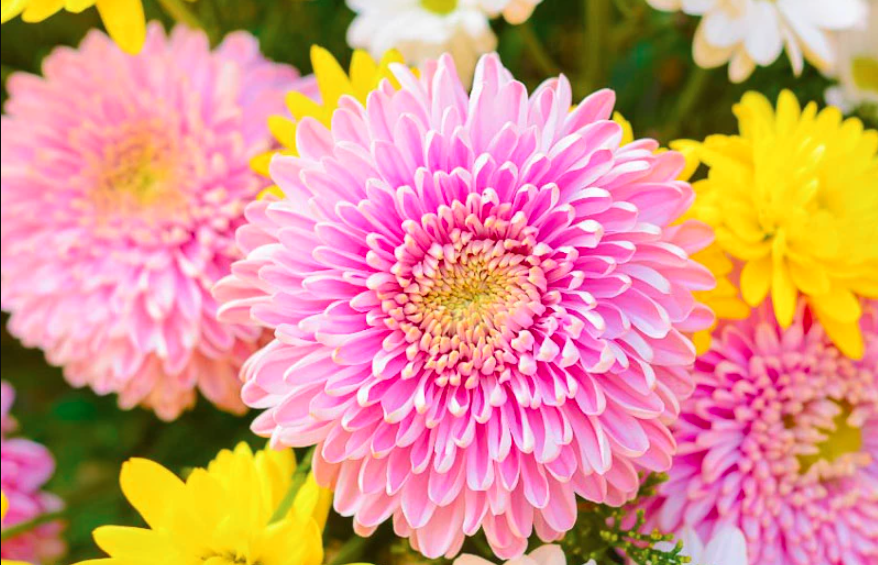
Looking to add a unique touch to your home or garden with a plant that’s both striking and easy to care for? Yucca plants are just what you need. Known for their distinctive look and tough, resilient nature, Yuccas bring a fun, colorful vibe to any space, and they’re often much easier to care for than you might think. These plants thrive in dry, hot climates like those of Southern America and the Caribbean, making them perfect for those who want something low-maintenance.
In this guide, we’ve rounded up some of the best types of Yucca plants you can grow, whether in your home or outdoors. Let’s dive in!
Popular Types of Yucca Plants
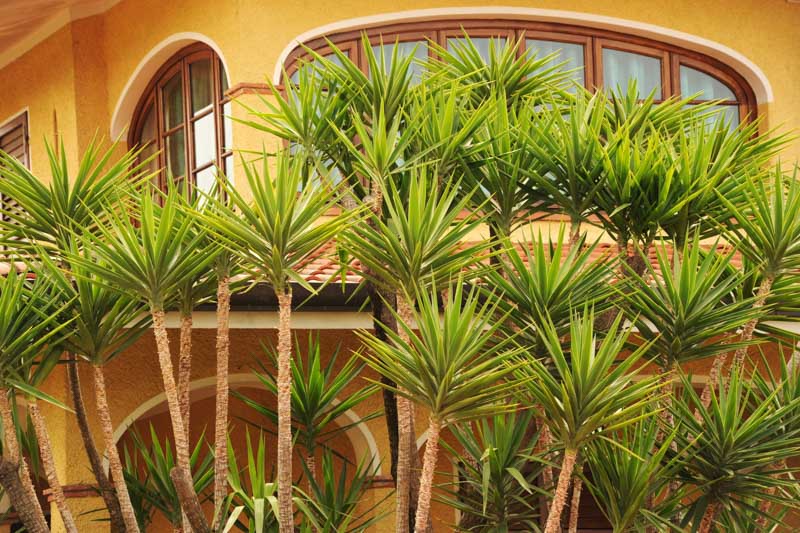
With over 40 species of Yucca to choose from, ranging from small shrubs to tall, tree-like plants, there’s no shortage of options. Whether you want to place one in your kitchen or turn your backyard into a desert oasis, these varieties are sure to impress.
1. Spineless Yucca (Yucca elephantipes)
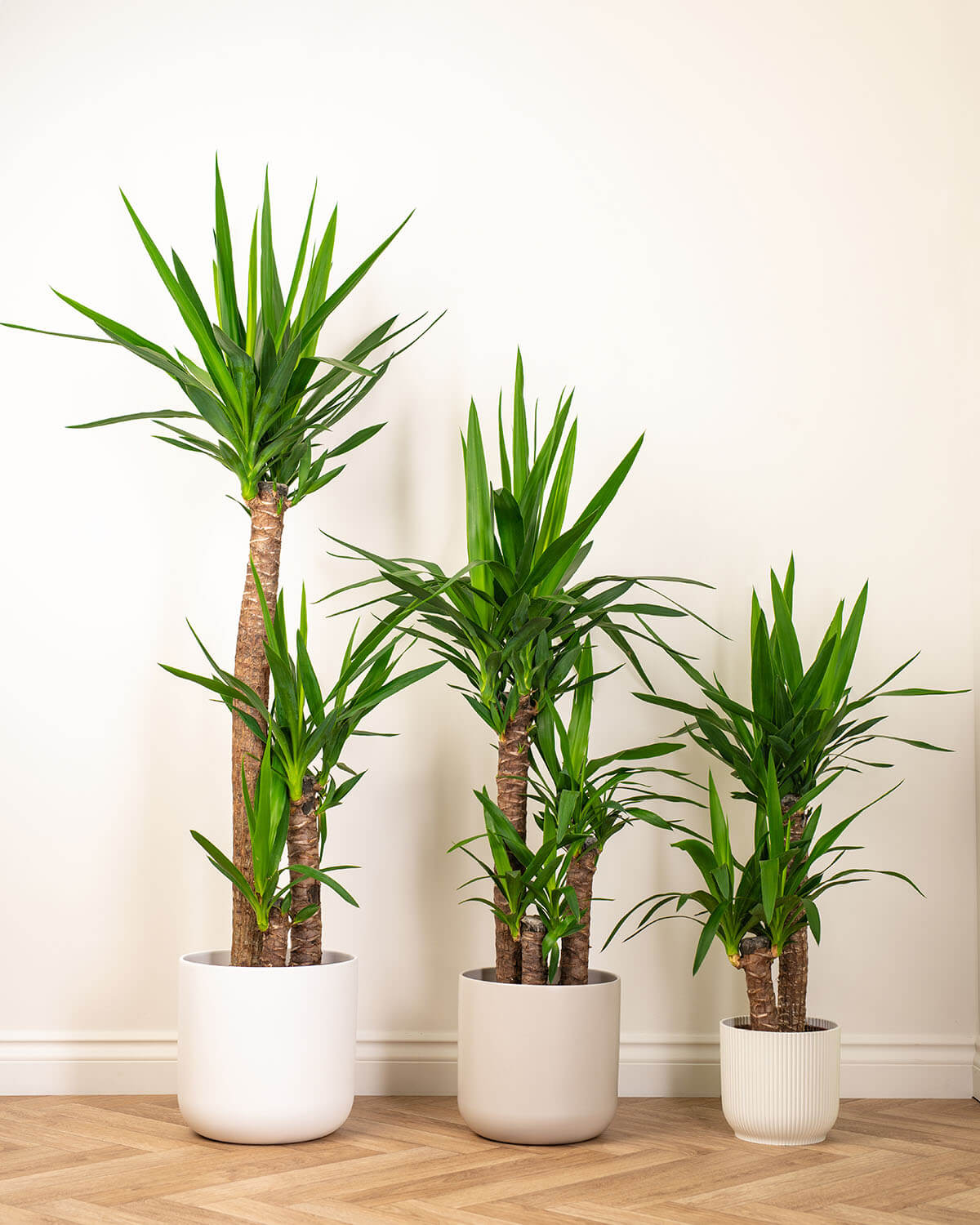
The Spineless Yucca is commonly grown indoors, often as a smaller potted plant, though it can reach up to 30 feet tall. It’s the perfect Yucca for indoor gardening, with soft, spineless leaves that make it safe to grow indoors. During the summer, it blooms beautiful white flowers that eventually turn into fruits.
2. Red Yucca (Hesperaloe parviflora)
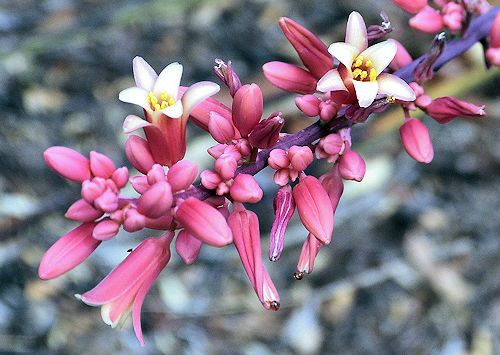
Native to Central America, the Red Yucca is a stunning addition to any outdoor garden. Known for its tall, slender spikes and bright pinkish flowers, this plant thrives in sunny, dry conditions. It’s highly drought-tolerant and blooms year-round, making it a colorful addition to sun-drenched gardens.
3. Yellow Yucca (Hesperaloe parviflora yellow)
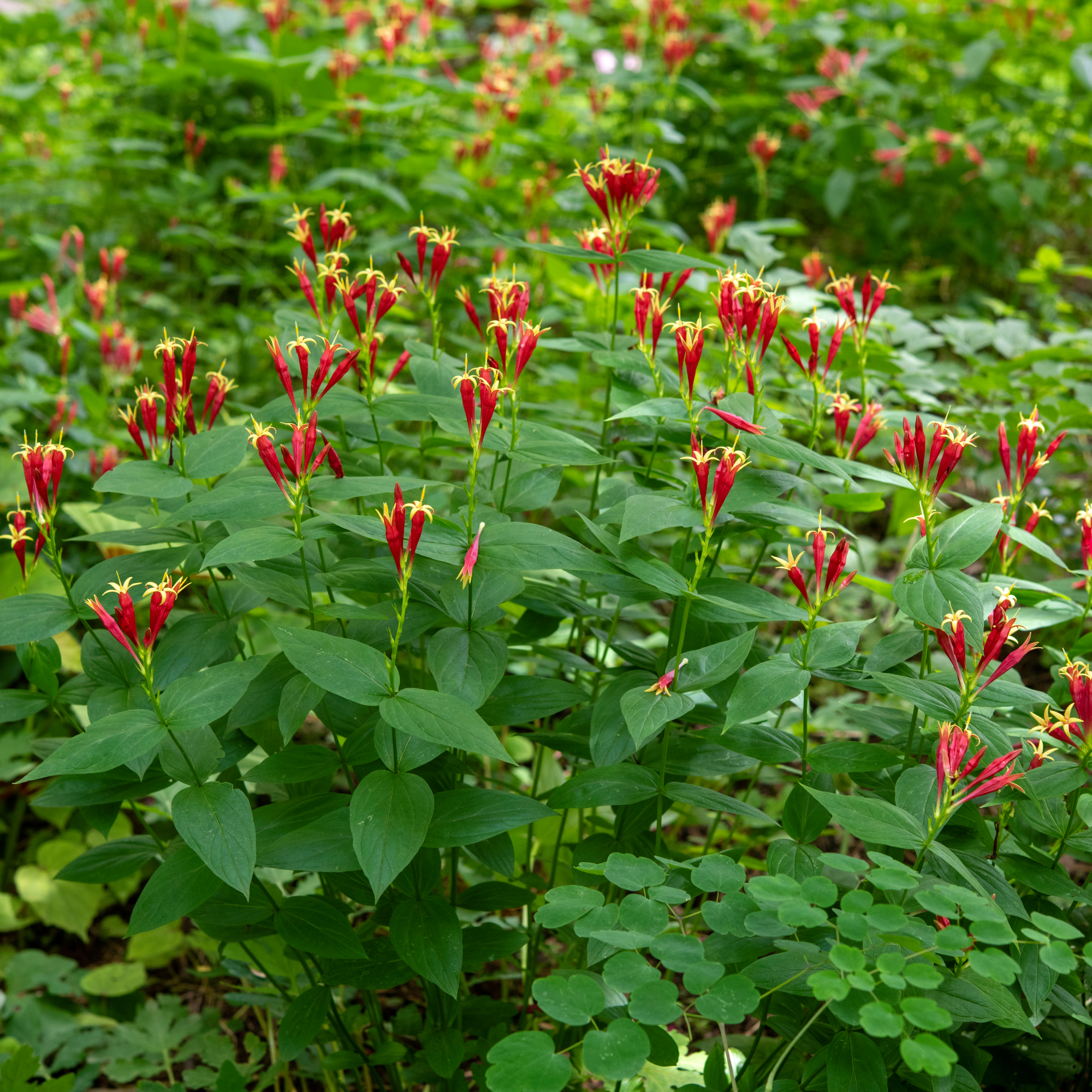
A relative of the Red Yucca, the Yellow Yucca features striking yellow trumpet-like flowers that bloom in clusters. These plants are perfect for creating a bi-colored garden with their bright hues attracting hummingbirds. The flowers bloom until fall, adding a long-lasting touch of beauty to your garden.
4. Adam’s Needle (Yucca filamentosa)
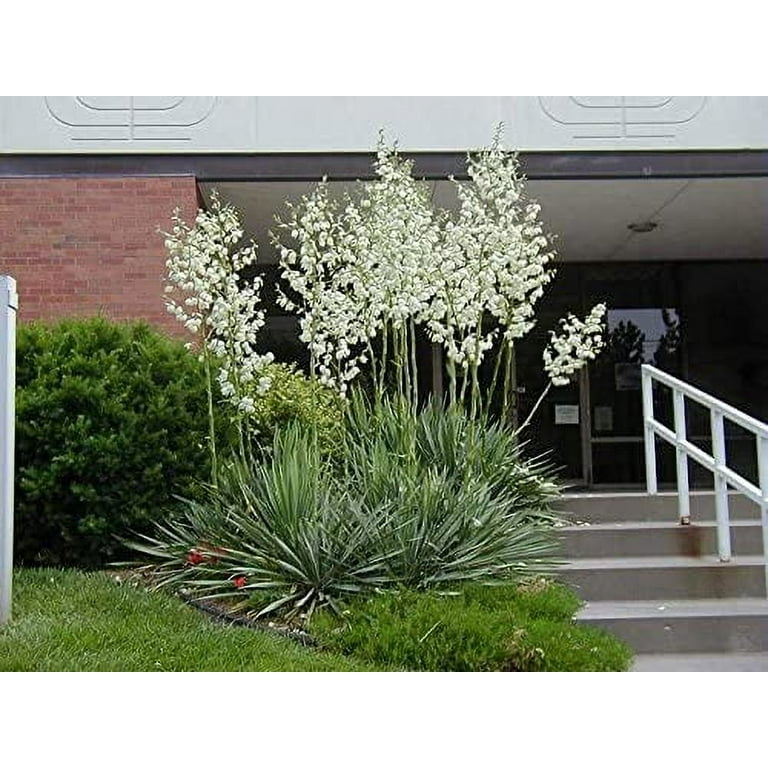
Adam’s Needle is native to Southeastern USA and is famous for its sharp-tipped leaves. This plant grows up to 4 feet tall and often serves as a specimen plant or is used in fire-resistant landscaping. In spring, it produces beautiful white flowers that resemble lanterns.
5. Joshua Tree (Yucca brevifolia)

The iconic Joshua Tree, named by Mormon pioneers, grows in the Mojave Desert and can reach up to 40 feet tall. It’s a hardy plant that thrives in sandy, dry soil, and it can live for up to 150 years. If you’re looking for a statement plant, this one’s a true showstopper.
7. Dwarf Joshua Tree
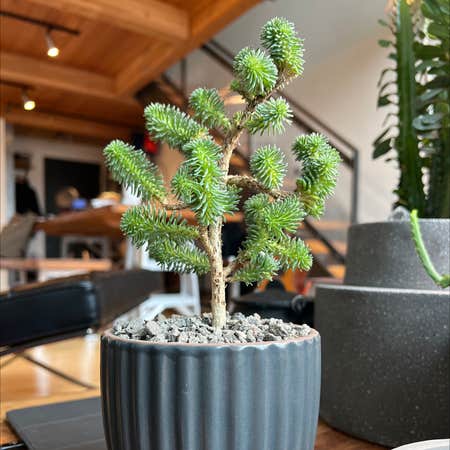
The Dwarf Joshua Tree looks just like the classic Joshua Tree but stays smaller, reaching a maximum height of just 12 feet. This compact version still blooms stunning ivory bell-shaped flowers in spring, making it an excellent choice for smaller spaces.
8. Soapweed Yucca (Yucca glauca)

Native to the desert grasslands of central North America, Soapweed Yucca features sharp, tall leaves and blooms fragrant green and white flowers in the summer. Its roots have traditionally been used to make soap, and its beautiful rosette of blue-green leaves makes it a great all-season landscape plant.
9. Spanish Dagger (Yucca aloifolia)

The Spanish Dagger is known for its sword-like leaves and striking appearance. This variety is often used in landscaping as an accent or background plant and blooms from June to July. It can grow up to 12 feet tall, making it a standout in any garden.
10. Beaked Yucca (Yucca rostrata)
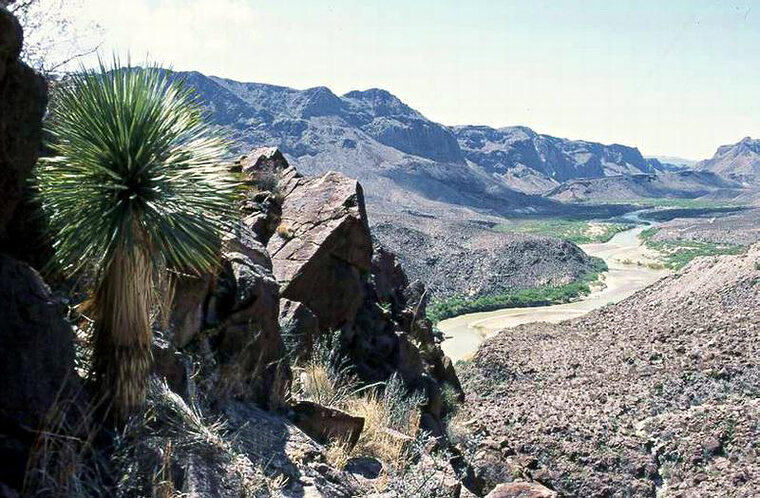
Also known as the Big Bend Yucca, the Beaked Yucca has a unique, pom-pom-shaped crown of pale blue leaves. This plant gives off a silvery haze due to the soft gray fibers that hang from its leaves. It blooms yellow-orange flowers, making it a beautiful addition to Mediterranean-style or gravel gardens.
11. Bear Grass Yucca (Yucca filamentosa)
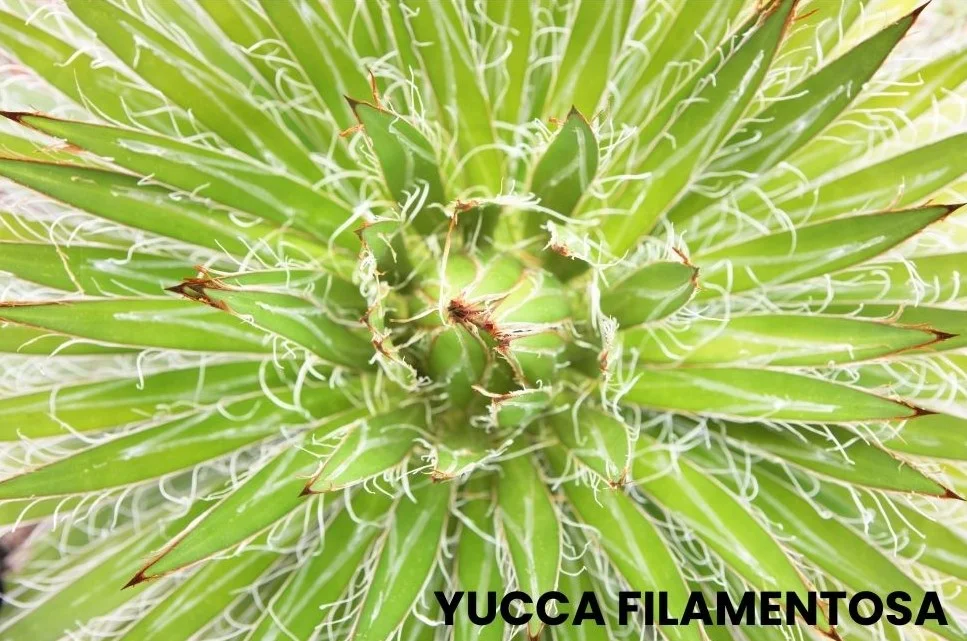
Similar to Adam’s Needle, the Bear Grass Yucca is one of the few varieties that can handle extreme cold and even frost. It’s found in colder climates like British Columbia and Alberta, Canada. This plant has softer leaves compared to Adam’s Needle and produces white flowers when in bloom. It’s also named after young bears that like to eat the plant’s stems in the wild.
12. Banana Yucca (Yucca baccata)
The Banana Yucca is unique because it produces edible fruits that are soft and succulent. The fruit has been traditionally eaten by the Navajo and Apache tribes. Like most Yuccas, it has sharp leaves and blooms flowers in the spring, making it a useful and attractive addition to your garden.
Caring for Your Yucca Plants
:max_bytes(150000):strip_icc()/grow-yucca-inside-1902500-05-870f63b5a8c34570bd8d26e482a3b497.jpg)
Yucca plants are hardy and don’t require a lot of attention, making them great for beginners. Here are some tips to help your Yuccas thrive:
- Sunlight: Yuccas love the sun! Make sure they get plenty of light, especially if they’re grown outdoors. If they’re grown indoors, place them in a sunny spot.
- Watering: These plants are drought-tolerant and don’t need frequent watering. Only water them when the soil is dry, and be careful not to overwater as they can rot.
- Soil: Yuccas prefer well-draining soil, especially sandy or gritty soil. Make sure the soil dries out between waterings to avoid root rot.
- Temperature: Yuccas thrive in warm climates, but they can also tolerate cooler temperatures, especially if kept in pots where you can control their environment.
Frequently Asked Questions (FAQs)
Q1: Can Yuccas be grown indoors?
Yes, many Yuccas, such as the Spineless Yucca, are perfect for indoor spaces. Just ensure they receive plenty of sunlight and are potted in well-draining soil.
Q2: How often should I water my Yucca?
Yucca plants are drought-tolerant, so water them only when the soil is dry to the touch. Overwatering can cause root rot.
Q3: Are Yuccas safe for pets?
Most Yuccas are safe for pets, but it’s always best to check each variety. The Spineless Yucca, in particular, is safe for homes with pets and children due to its soft leaves.
Q4: Do Yuccas require pruning?
Yuccas typically don’t need much pruning, but you can remove dead leaves or spent flower spikes to maintain their appearance. Regular cleaning will keep them looking tidy.
Q5: Can I grow a Yucca in colder climates?
Some Yucca varieties, such as the Bear Grass Yucca, are cold-tolerant and can survive in colder climates. However, most Yuccas prefer warm, dry conditions and may need protection in frost-prone areas.
Conclusion
Whether you’re looking for an indoor plant to brighten up your home or an outdoor focal point to add some drama to your garden, Yucca plants are the way to go. With a wide variety of types, each with its unique features and care needs, there’s a Yucca for every gardener. Thanks to their striking appearance and minimal care requirements, Yuccas are perfect for both beginners and experienced gardeners alike.
By following simple care guidelines, you can enjoy these resilient and beautiful plants for many years to come. Happy gardening!

